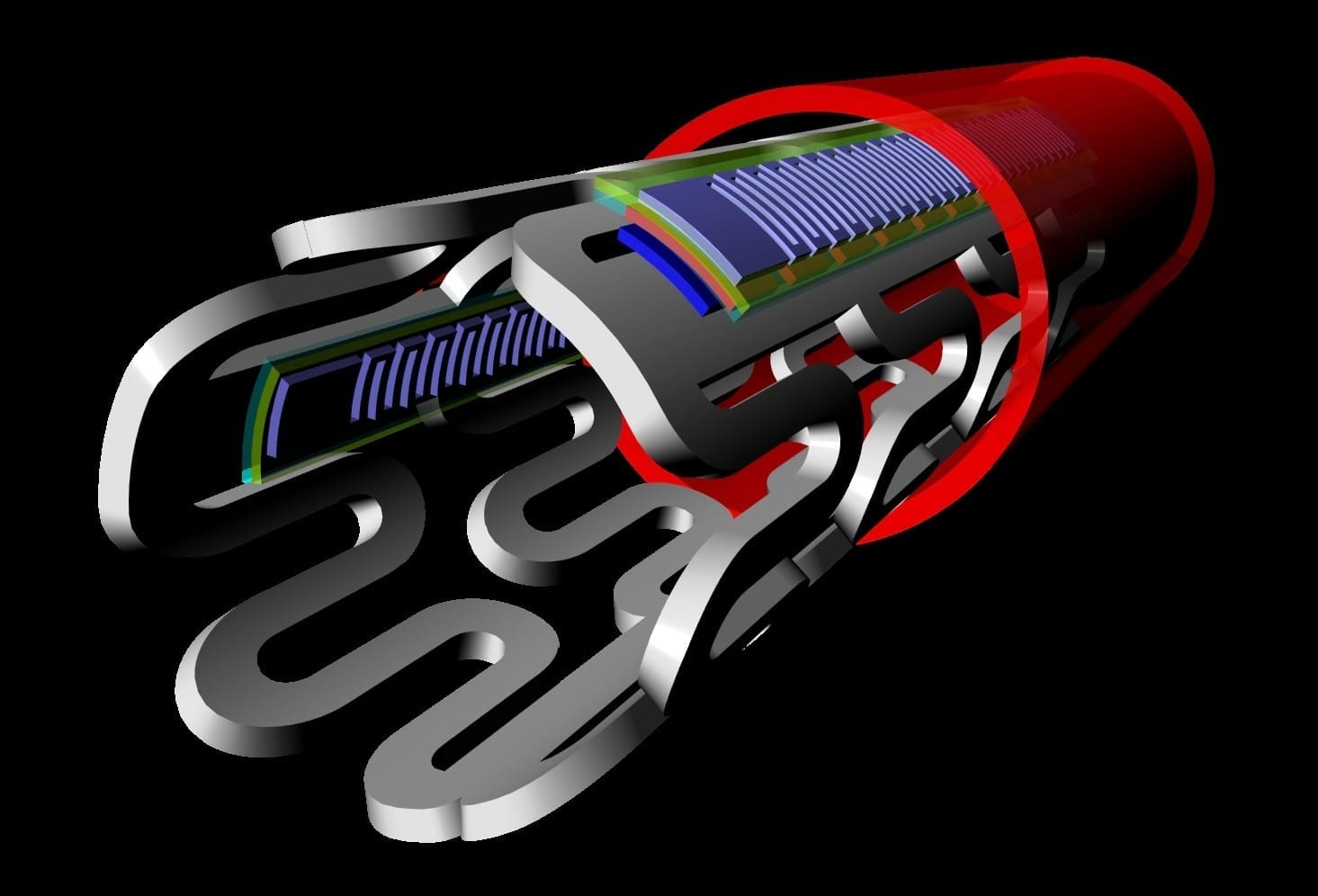
Portable electronics — typically made of non-renewable, non-biodegradable and potentially toxic materials — are discarded at an alarming rate in consumers’ pursuit of the next best electronic gadget.
In an effort to alleviate the environmental burden of electronic devices, a team of University of Wisconsin-Madison researchers has collaborated with researchers in the Madison-based U.S. Department of Agriculture Forest Products Laboratory (FPL) to develop a surprising solution: a semiconductor chip made almost entirely of wood.
The research team, led by UW-Madison electrical and computer engineering professor Zhenqiang “Jack” Ma, described the new device in a paper published today (May 26, 2015) by the journal Nature Communications. The paper demonstrates the feasibility of replacing the substrate, or support layer, of a computer chip, with cellulose nanofibril (CNF), a flexible, biodegradable material made from wood.
“The majority of material in a chip is support. We only use less than a couple of micrometers for everything else,” Ma says. “Now the chips are so safe you can put them in the forest and fungus will degrade it. They become as safe as fertilizer.”
Zhiyong Cai, project leader for an engineering composite science research group at FPL, has been developing sustainable nanomaterials since 2009.
“If you take a big tree and cut it down to the individual fiber, the most common product is paper. The dimension of the fiber is in the micron stage,” Cai says. “But what if we could break it down further to the nano scale? At that scale you can make this material, very strong and transparent CNF paper.”
“Now the chips are so safe you can put them in the forest and fungus will degrade it. They become as safe as fertilizer.”
Jack Ma
Working with Shaoqin “Sarah” Gong, a UW-Madison professor of biomedical engineering, Cai’s group addressed two key barriers to using wood-derived materials in an electronics setting: surface smoothness and thermal expansion.
“You don’t want it to expand or shrink too much. Wood is a natural hydroscopic material and could attract moisture from the air and expand,” Cai says. “With an epoxy coating on the surface of the CNF, we solved both the surface smoothness and the moisture barrier.”
Gong and her students also have been studying bio-based polymers for more than a decade. CNF offers many benefits over current chip substrates, she says.
Read more: A new kind of wood chip: collaboration could lead to biodegradable computer chips
The Latest on: Biodegradable computer chips
[google_news title=”” keyword=”Biodegradable computer chips” num_posts=”10″ blurb_length=”0″ show_thumb=”left”]
via Google News
The Latest on: Biodegradable computer chips
- Must Have Laptop Travel Accessorieson April 27, 2024 at 9:00 am
Laptops are made to travel, but that doesn't mean there aren't accessories ready and waiting to make it even easier work and game on the go!
- As Biden celebrates computer chip factories, voters wait for the promised production to starton April 25, 2024 at 10:42 am
President Joe Biden has arrived in New York state to celebrate a tech company’s plans to build a campus of computer chip factories made possible in part with government support ...
- Melbourne Proudly Hosts Unique Electron Microscope, a First-of-Its-Kindon April 17, 2024 at 11:26 pm
A suite of three electron microscopes, including one of the highest resolution microscopes in the world, now calls Monash home, helping scientists push the frontiers in materials science to solve ...
- Monash University now home to three electron microscopeson April 16, 2024 at 2:51 pm
Monash University has announced it is now home to a trio of top-tier electron microscopes, among them, one of the highest resolution microscopes in the world. In a recent announcement Monash ...
- Melbourne home to one-of-a-kind electron microscopeon April 14, 2024 at 5:00 pm
A suite of three electron microscopes, including one of the highest resolution microscopes in the world, now calls Monash home, helping scientists push the frontiers in materials science to solve ...
- Tiny biodegradable straw forts could protect new coral from fish who snack on it ‘like popcorn’on April 14, 2024 at 11:30 am
A tiny fort of drinking straws offers new hope for what some call the rainforest of the sea: critically endangered coral reef populations that some fish snack on like popcorn.
via Bing News









